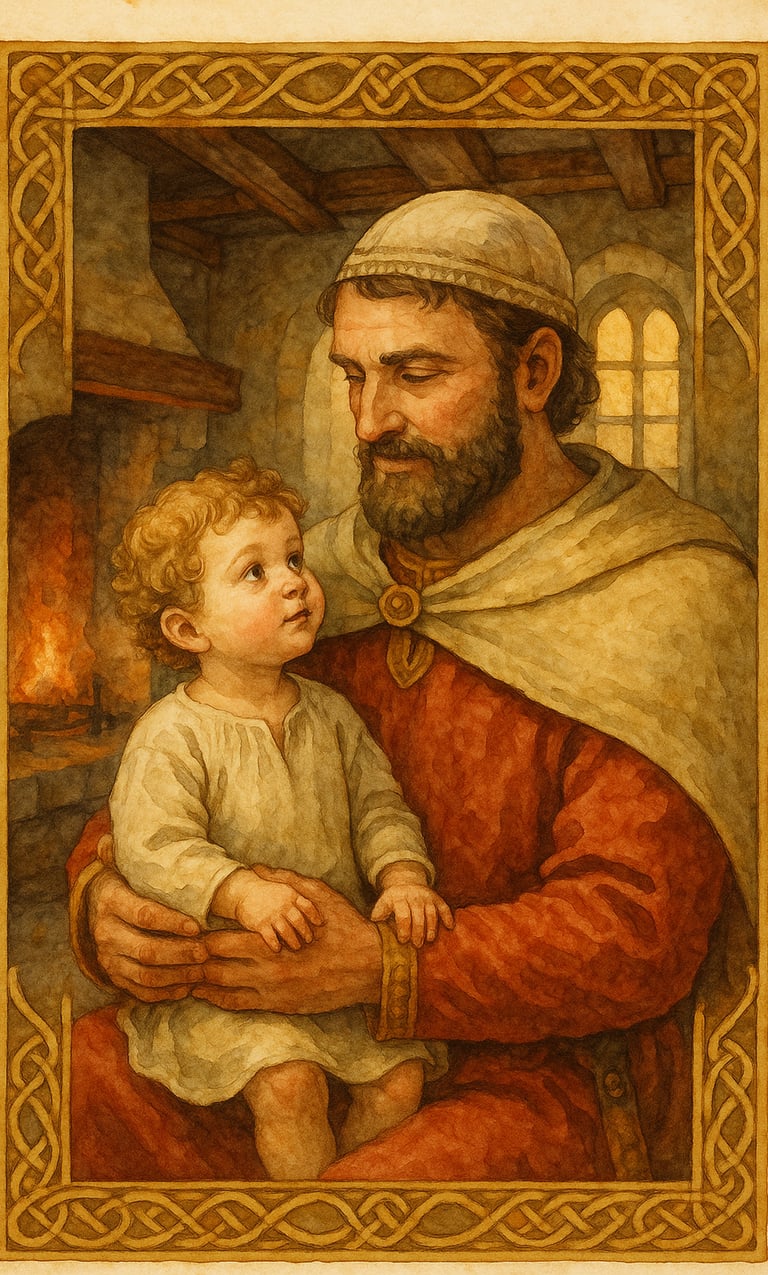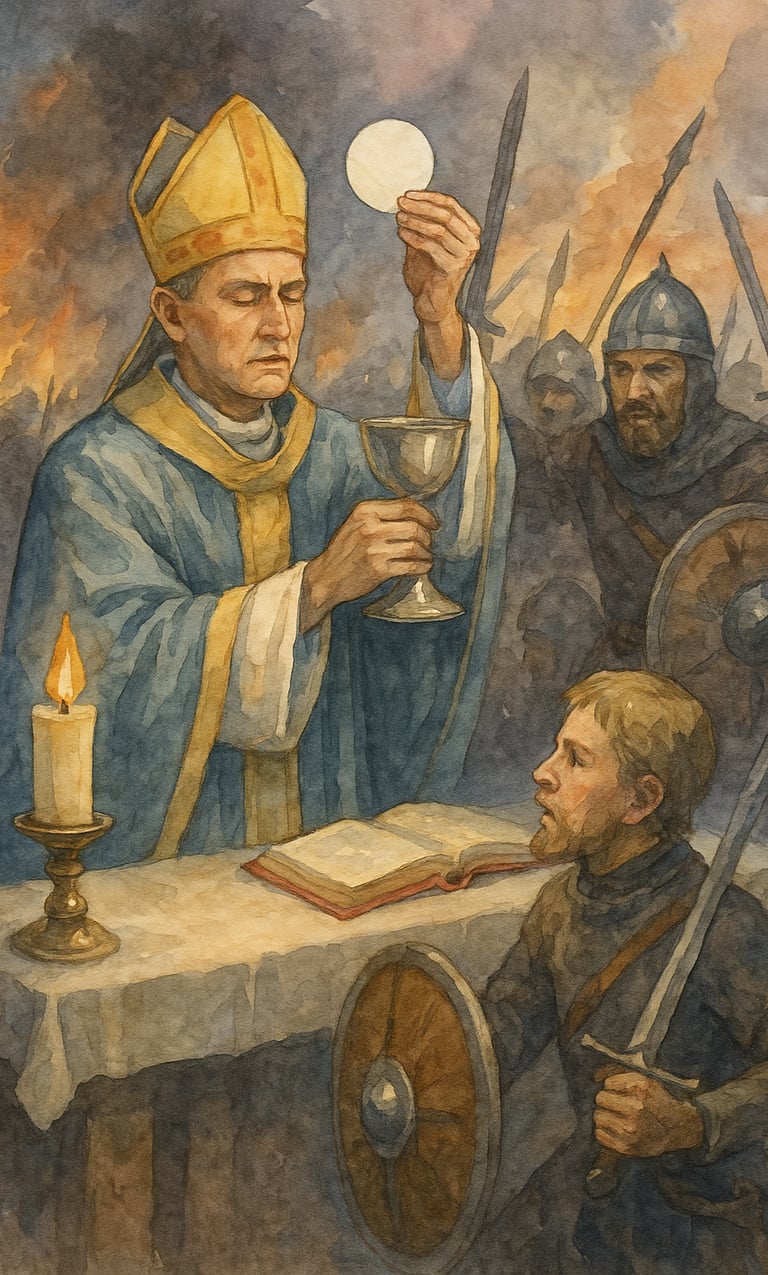St. Ulric and the Church in Crisis
Holiness in the Fires of Reform
Halo & Light Studios
7/9/20253 min read


Click Link for a reel of Daily Dose of Saints and Faithful Art:
https://youtube.com/shorts/fQ0KQtg6qQg
St. Ulric of Augsburg (c. 890–973) lived during one of the most turbulent chapters in Church history. War, corruption, and spiritual decay afflicted Christendom. But Ulric did not despair. He chose reform—not the reform of protest, but the reform of personal holiness—a reform that began in his own soul and quietly renewed the Church around him.
Born into nobility as the son of Count Hucbald of Suabia, Ulric was sent at the age of seven to the renowned monastic school of St. Gall. There, immersed in Scripture and the sacred rhythms of the liturgy, he grew in the virtues that would mark his life: modesty, discipline, purity, and a deep love for the poor. His quiet strength caught the eye of Bishop Adalbero of Augsburg, who mentored him, made him his chamberlain, and eventually ordained him a priest.
In 923, King Henry I of Germany appointed Ulric as Bishop of Augsburg. His diocese was in ruins—ravaged by neglect, moral laxity, and external threat. Ulric immediately got to work. He rebuilt churches, corrected abuses among the clergy, defended the sacraments, and restored trust among the faithful. His leadership was courageous and pastoral. He visited parishes on foot, shared his own goods with the poor, and made the Divine Office the heartbeat of his episcopacy.
In 955, when the Magyars invaded and besieged Augsburg, Ulric did not flee. He stayed with his people, offering Mass, leading prayers, and organizing defenses. After the Christian victory at the Battle of Lechfeld, many attributed the triumph to Ulric’s steadfast intercession. He became a symbol of the holy bishop—a shepherd present in both peace and peril.
After decades of service, Ulric retired to St. Gall, where he died in 973. In 993, he was canonized by Pope John XV—the first saint in Church history to be formally canonized by a pope. This moment marked the beginning of the Church’s official process for recognizing sainthood—not based on popularity or legend, but on heroic virtue and communion with the universal Church.
Saints Are the Church’s True Reformers
Saints see the flaws in the Bride of Christ—and instead of walking away, they kneel deeper in prayer. They begin with their own conversion, their own repentance, their own obedience. And in doing so, they renew the Church from within.
St. Ulric is a model of this reform. He didn’t launch a campaign or publish a manifesto. He simply lived the Gospel. And through his faithfulness, the Church was strengthened.
By contrast, Martin Luther, though sincerely troubled by the corruption of his time, chose a different path. Instead of trusting Christ’s promise that “the gates of hell shall not prevail against the Church” (Matthew 16:18), Luther broke from her. His protest fractured the visible unity of the Body of Christ. What began as a call for reform ended in division, loss of apostolic authority, and separation from the Eucharist.
Millions were led away from the sacraments. What followed was doctrinal confusion, moral disarray, and the very fragmentation Christ prayed against: “That they may all be one” (John 17:21).
Saints offer us a better way: reform through fidelity, not fracture.
In our time—when scandal, confusion, and secularism tempt many to give up on the Church—St. Ulric reminds us that the answer is not to walk away, but to become holy. To restore the Church, we must first restore the temple within.
St. Ulric of Augsburg, pray for true reformers.
Pray for our bishops.
Pray for the unity of Christ’s Church.
Footnotes:
The Magyars were a nomadic people of Central Asian origin who migrated westward and became the ancestors of modern Hungarians. In the 9th and 10th centuries, they were feared across Europe for their devastating horseback raids, especially targeting Christian kingdoms.
The Battle of Lechfeld, fought on August 10, 955, was a critical turning point in European history. Under Otto I, Christian forces from Bavaria, Swabia, Franconia, and Bohemia decisively defeated the Magyars near Augsburg, ending their invasions and securing the future of Catholic Europe.


